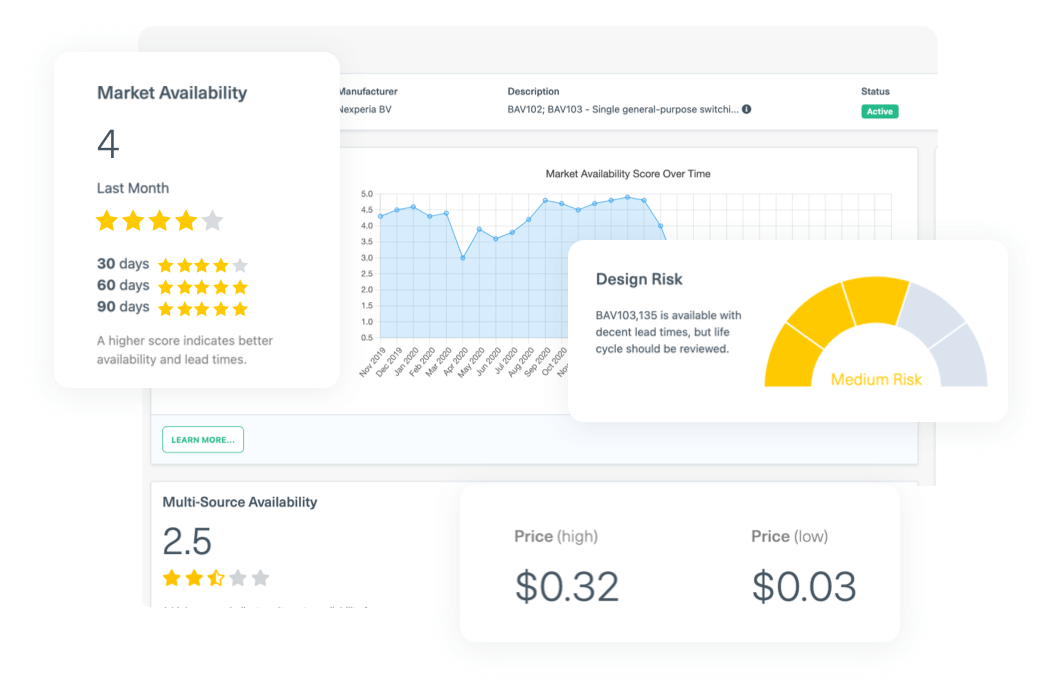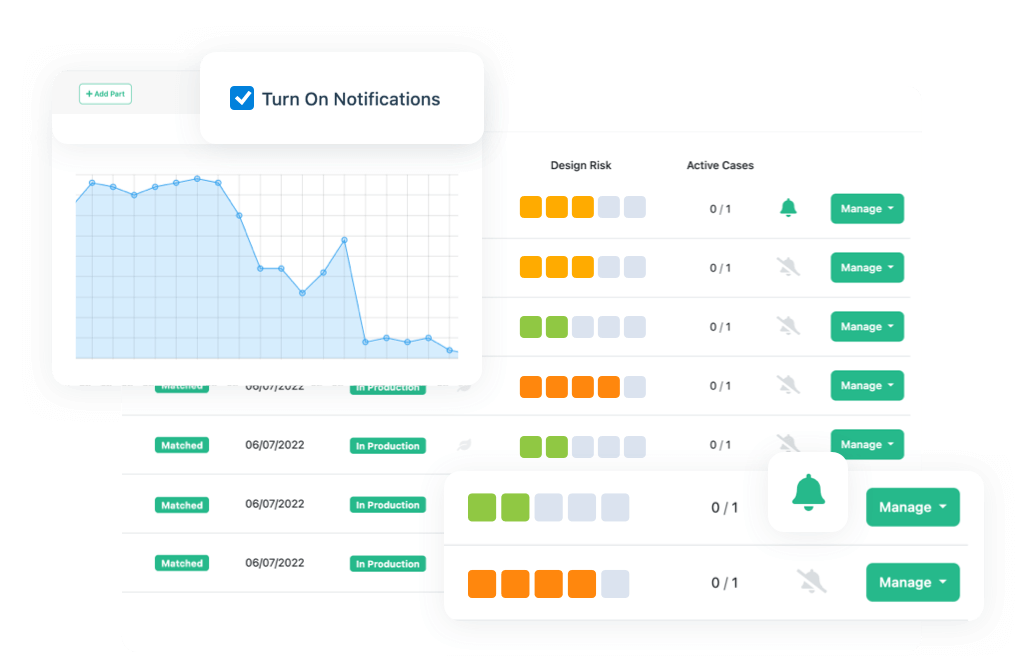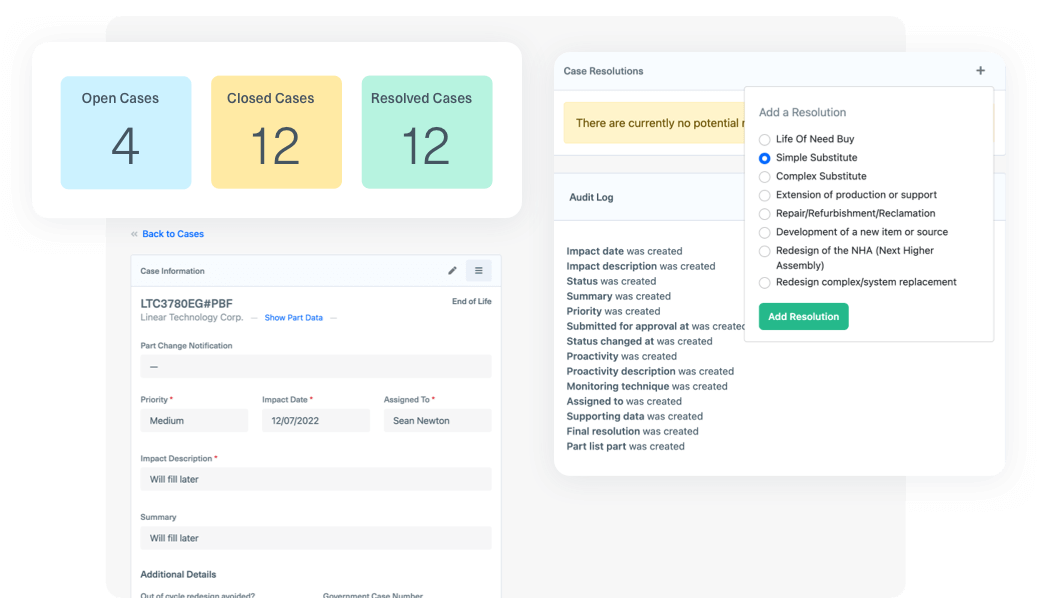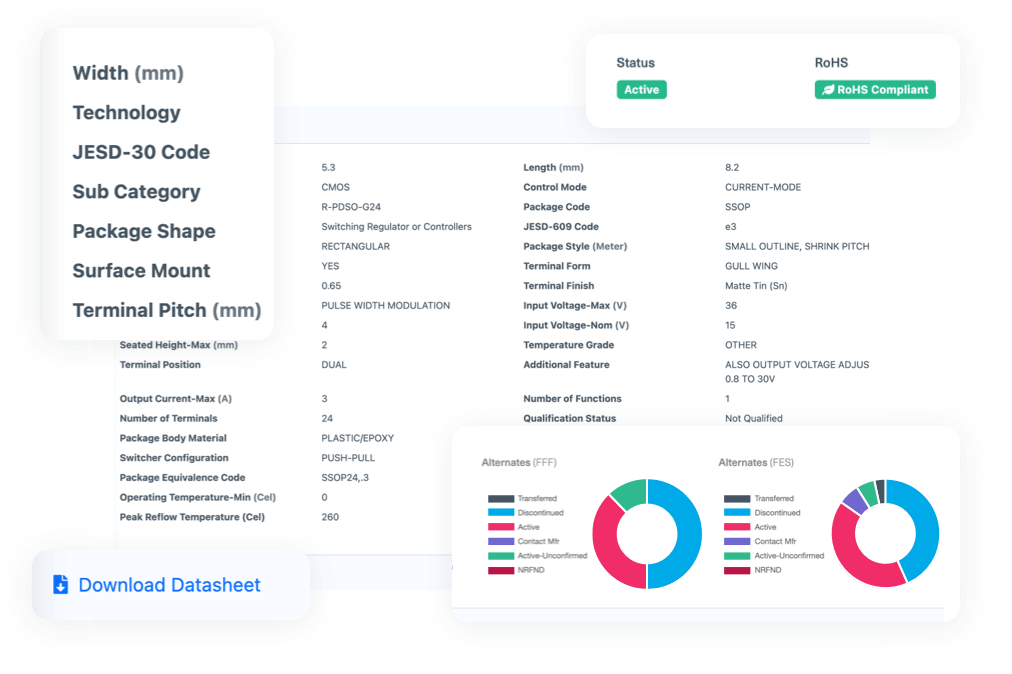Obsolescence Reporting, Case Management & Market Insights SaaS
Role: UX Manager & Lead Designer
Collaborating with VP of Product, Digital Product Team & Engineering Team
Provide users with an insider view of the market to help them effectively manage electronic components, supply chain complexities to avoid and respond to future & existing obsolescence challenges. Additionally, create tools and features that deliver actionable insights through predictive analytics, notification alerts, case management building and reporting and team collaboration tools.
Role: UX Manager & Lead Designer
Collaborating with VP of Product, Digital Product Team & Engineering Team
Provide users with an insider view of the market to help them effectively manage electronic components, supply chain complexities to avoid and respond to future & existing obsolescence challenges. Additionally, create tools and features that deliver actionable insights through predictive analytics, notification alerts, case management building and reporting and team collaboration tools.
Project Goals & Needs
Core Needs
•Market Insights and Predictive Analytics
•Develop intuitive dashboards and interfaces that display real-time market transactions.
•Integrate predictive analytics tools to help users identify risks and uncover new opportunities.
•Provide customizable alerts for proactive risk management.
Obsolescence Case Management
•Design a collaborative platform for monitoring component shortages and obsolescence.
•Enable users to track, manage, and resolve risks through an intuitive case management system.•Ensure easy sharing and documentation capabilities for team collaboration.
Integrated Data Access
•Provide users with seamless access to lifecycle status, technical specifications, and alternate component listings.
•Incorporate smart search and filter features to simplify finding and evaluating components.
•Ensure all critical data is well-organized and easily accessible within the tool.
Next Steps
•Conduct user research to validate needs and pain points.
•Develop wireframes and prototypes for core features.
•Test usability with stakeholders and iterate based on feedback.
•Deploy and monitor analytics to ensure the tools deliver on user expectations.
Understanding the depth of the user journey
We began by creating a straightforward and intuitive web map to clearly define what users need to gain actionable market insights, receive timely alerts and notifications, and stay ahead of potential obsolescence issues. This mapping process allowed us to break down complex requirements into easily digestible components, ensuring that users have access to all critical information at a high-level, 30,000-foot perspective. By organizing the data and features in this way, we ensured that users can seamlessly navigate the platform, identify trends, and make informed decisions without feeling overwhelmed by unnecessary complexity.
We began by creating a straightforward and intuitive web map to clearly define what users need to gain actionable market insights, receive timely alerts and notifications, and stay ahead of potential obsolescence issues. This mapping process allowed us to break down complex requirements into easily digestible components, ensuring that users have access to all critical information at a high-level, 30,000-foot perspective. By organizing the data and features in this way, we ensured that users can seamlessly navigate the platform, identify trends, and make informed decisions without feeling overwhelmed by unnecessary complexity.
User Research & Feedback inspired wireframes was a rewarding challenge
Designing a fully customizable product for obsolescence case management presented unique challenges, as there were no existing benchmarks or comparable tools in the market. Most companies relied on proprietary internal systems for managing obsolescence reporting, requiring us to adopt a research-driven approach. To gain insights, we collaborated with industry leaders such as Boeing, Porsche, Intel, and Texas Instruments, conducting extensive user research to identify their specific needs. Through over 20 user testing sessions on our prototype, we gathered critical feedback to refine and validate our wireframes, ensuring the foundation of the tool was user-centered and effective for creating and managing cases.
Designing a fully customizable product for obsolescence case management presented unique challenges, as there were no existing benchmarks or comparable tools in the market. Most companies relied on proprietary internal systems for managing obsolescence reporting, requiring us to adopt a research-driven approach. To gain insights, we collaborated with industry leaders such as Boeing, Porsche, Intel, and Texas Instruments, conducting extensive user research to identify their specific needs. Through over 20 user testing sessions on our prototype, we gathered critical feedback to refine and validate our wireframes, ensuring the foundation of the tool was user-centered and effective for creating and managing cases.

Comprehensive Dashboard Overview
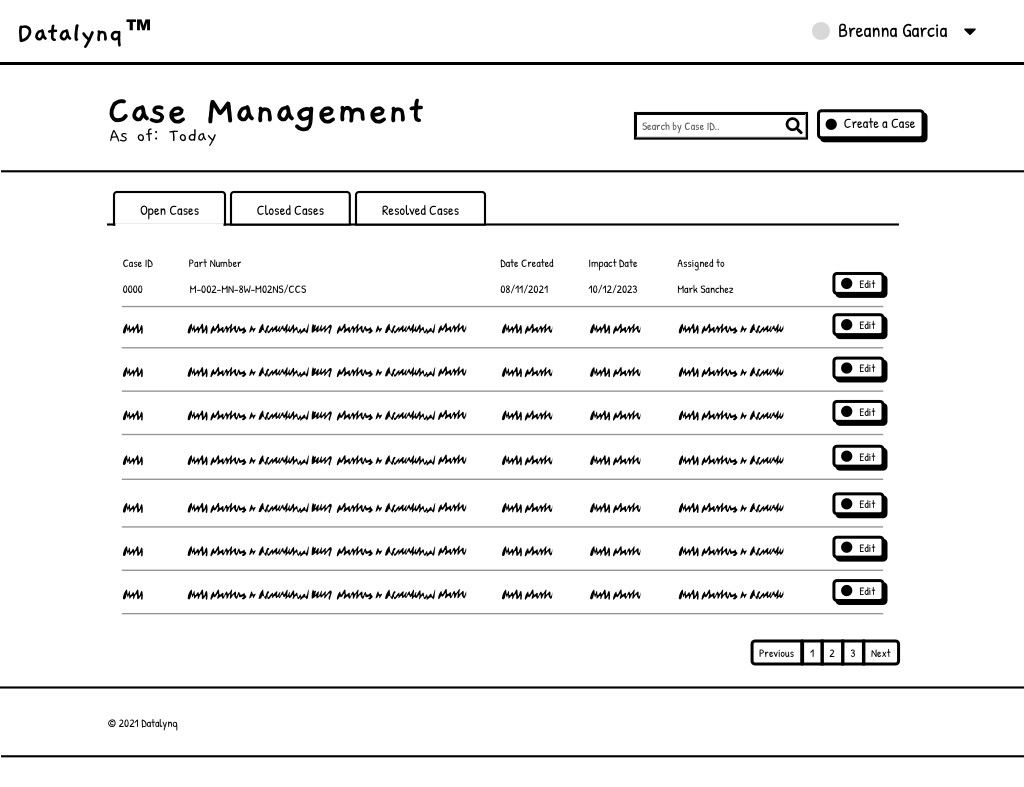
Case Management & Creation Case
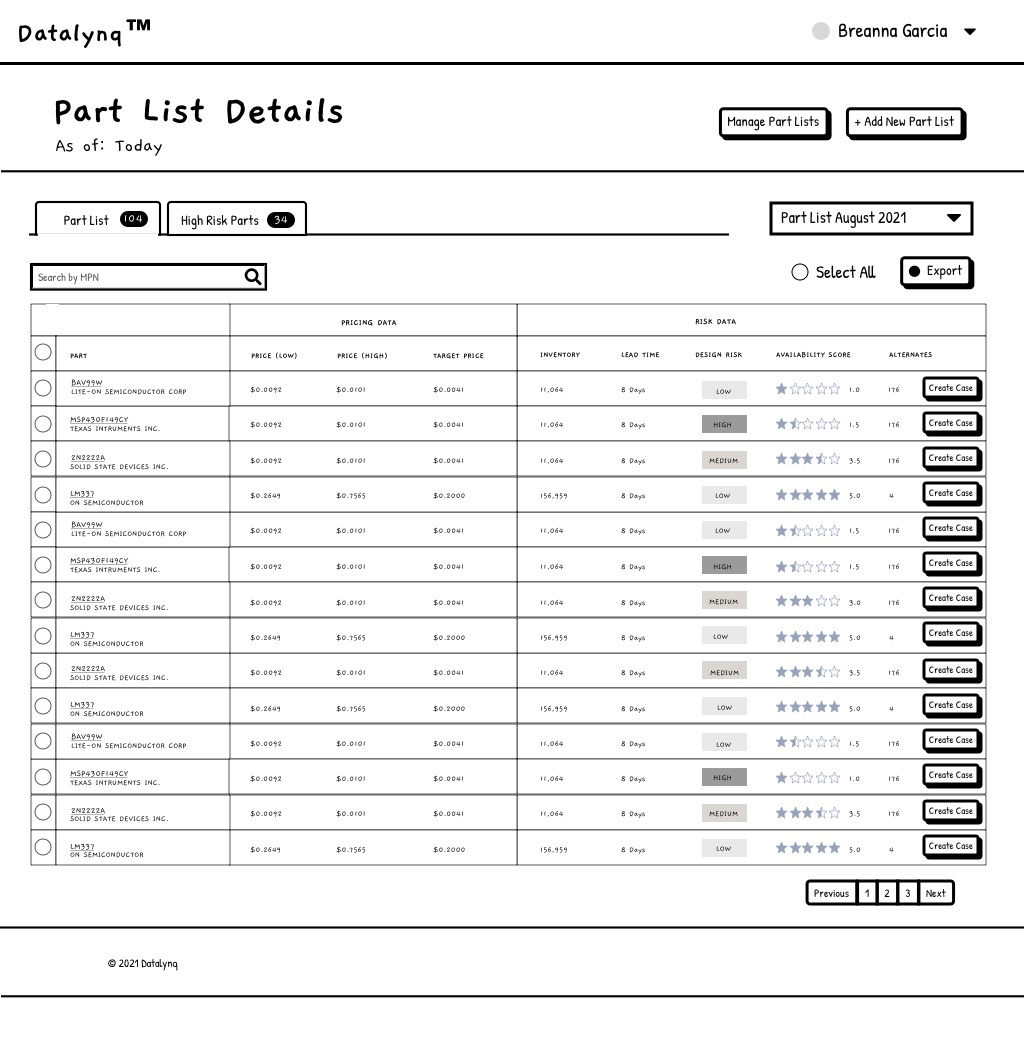
Customer Part List Management
High-fidelity designs while continually testing and getting feedback from our partners
Our initial wireframes, informed by user research and feedback, provided a strong starting point. However, we discovered that transitioning to high-fidelity mockups elicited even more detailed and actionable feedback from users. By staying engaged with our original research and feedback group, we were able to iteratively refine the Datalynq product. This collaborative process not only enhanced the design but also deepened our understanding of user needs and goals, enabling me and the lead designer to make more informed, user-centric decisions.
Our initial wireframes, informed by user research and feedback, provided a strong starting point. However, we discovered that transitioning to high-fidelity mockups elicited even more detailed and actionable feedback from users. By staying engaged with our original research and feedback group, we were able to iteratively refine the Datalynq product. This collaborative process not only enhanced the design but also deepened our understanding of user needs and goals, enabling me and the lead designer to make more informed, user-centric decisions.
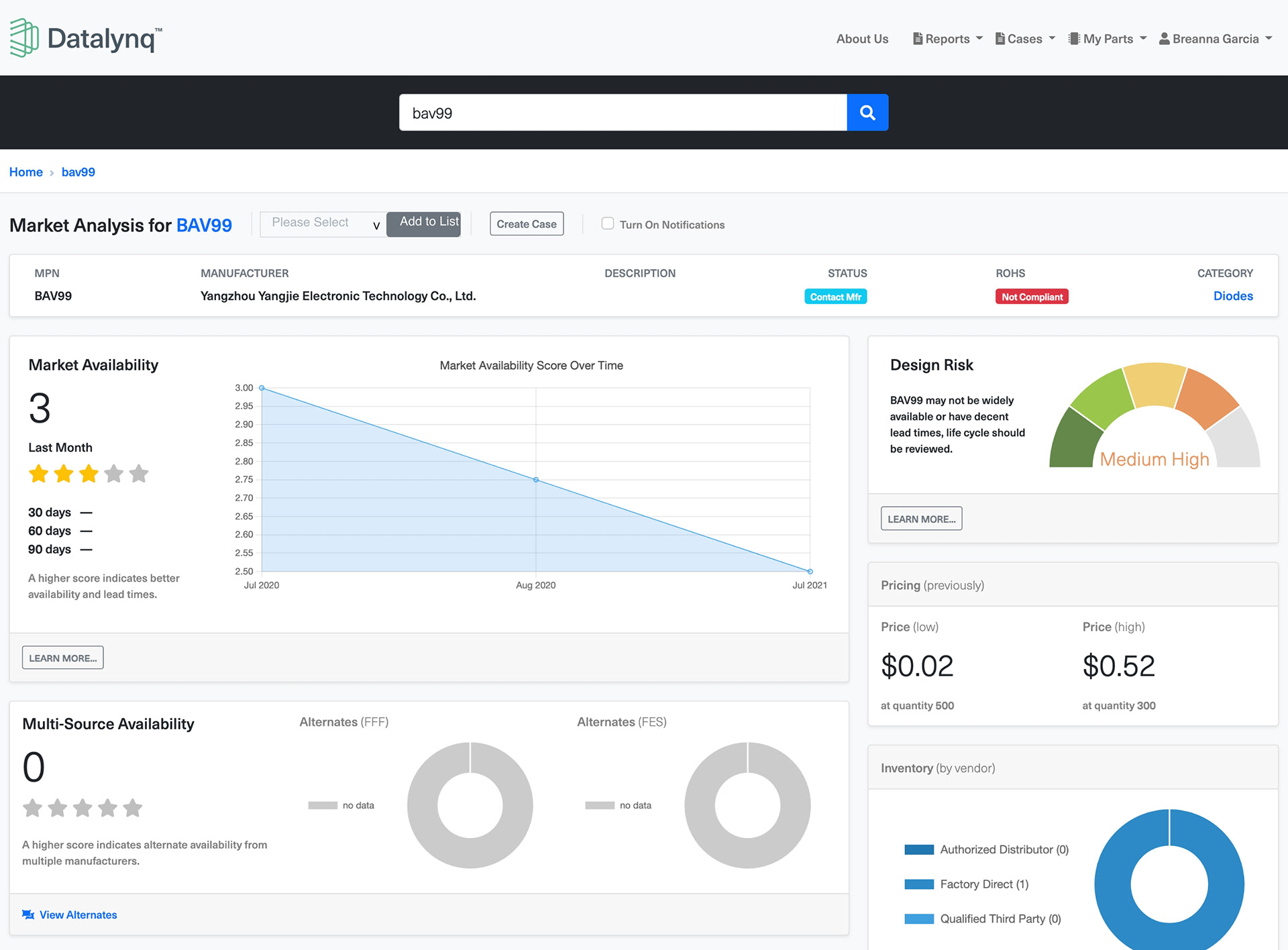
Part Detail Page
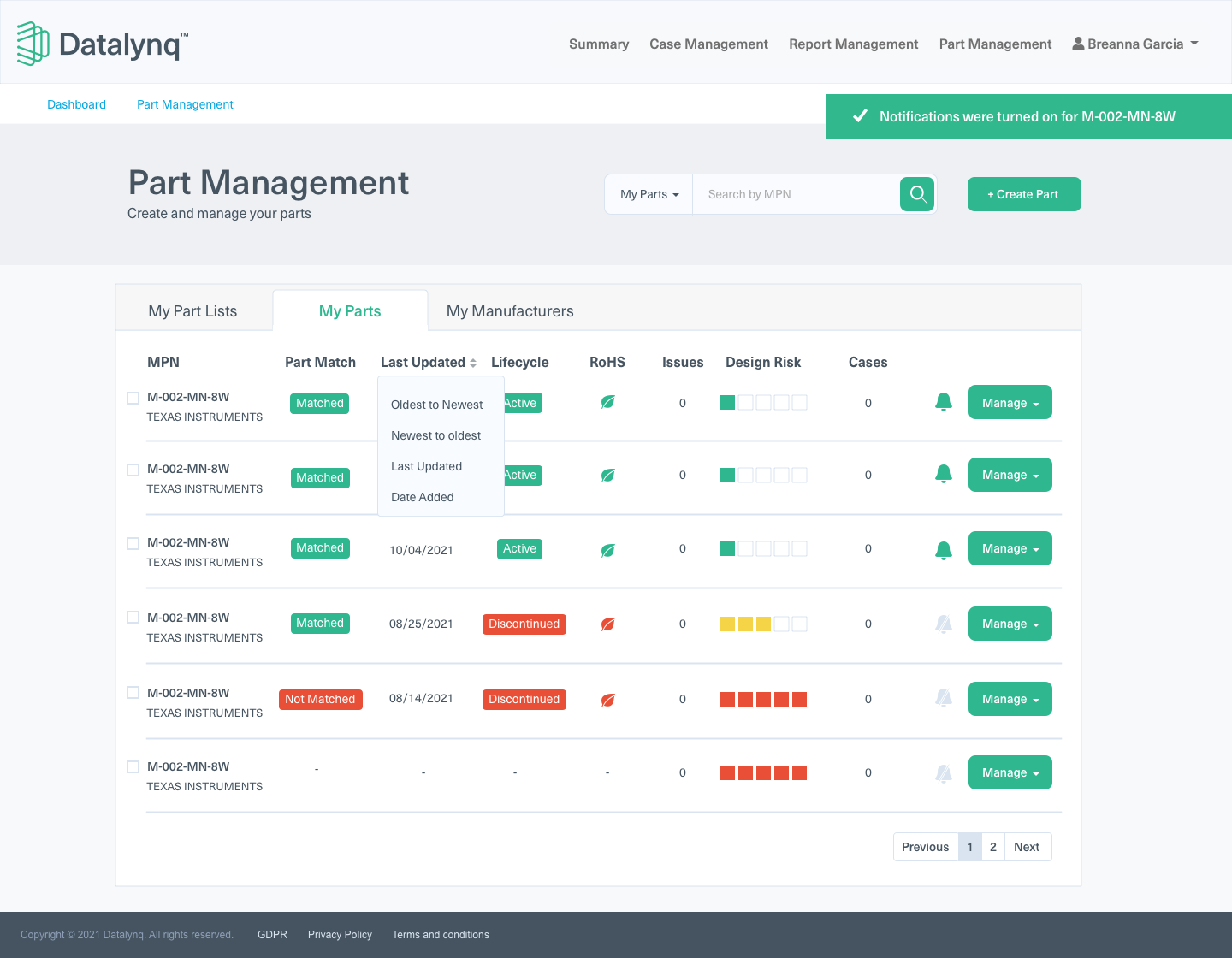
Part Management
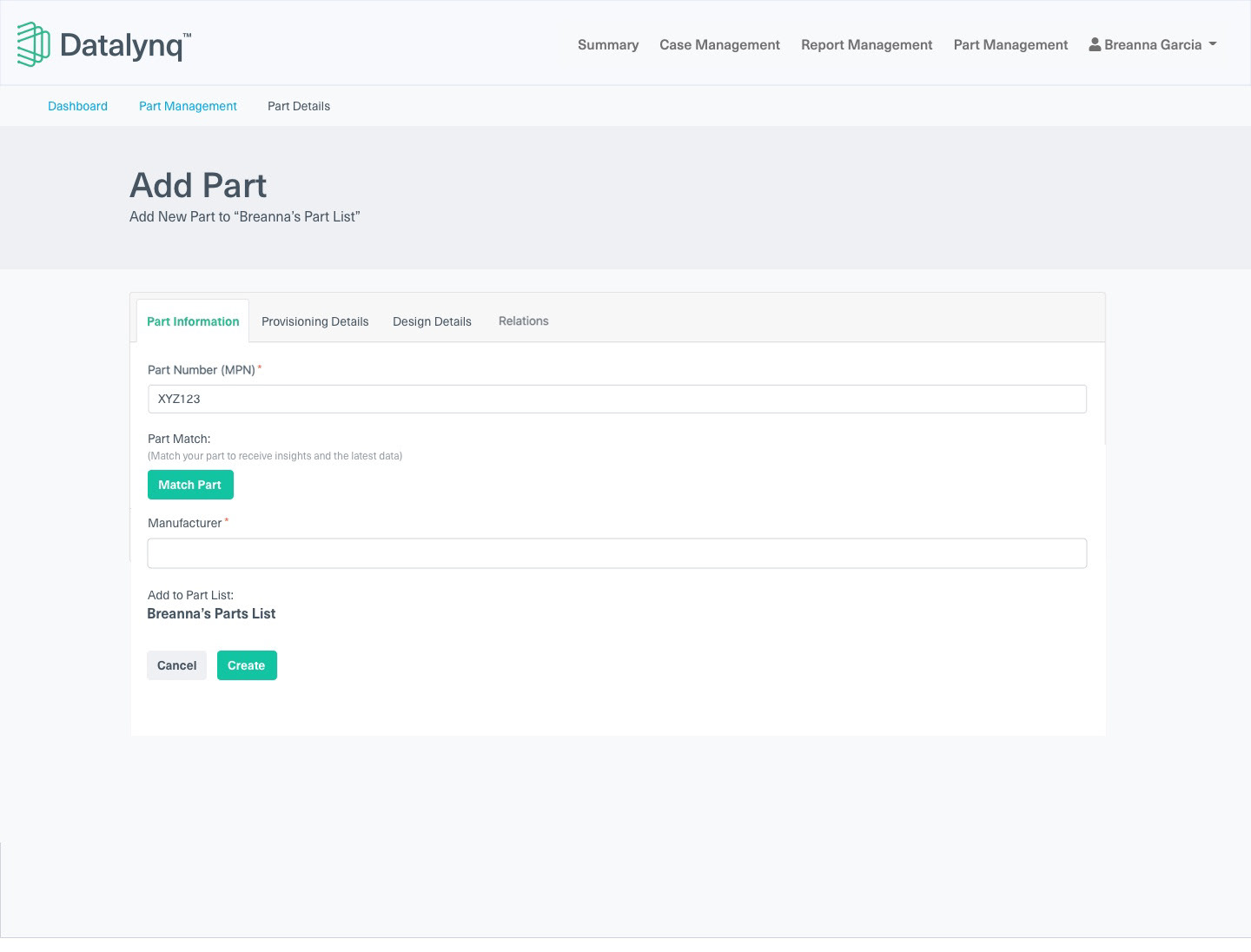
Add Part

Create New Case
Now that we have our MVP a new challenge was presented. "How do we market our product and make it make sense to users who need it?"
Creating a product that hasn't existed in the public before was a bit of a challenge. From working with so many users who were so close to the product, we compressed our knowledge of what we learned working on such a complex but powerful tool. So we took the elephant 🐘 and put it into a bottle for users to better understand in our homepage and callouts in our demo experiences. We also created training videos and tutorials to help our users understand best practices for their parts list and company needs.
Creating a product that hasn't existed in the public before was a bit of a challenge. From working with so many users who were so close to the product, we compressed our knowledge of what we learned working on such a complex but powerful tool. So we took the elephant 🐘 and put it into a bottle for users to better understand in our homepage and callouts in our demo experiences. We also created training videos and tutorials to help our users understand best practices for their parts list and company needs.
Outcome & Conclusion
The development of our obsolescence case management tool was driven by a commitment to user-centered design and data-driven insights. By leveraging anonymized historical and daily data from a leading global electronic marketplace, we ensured that our tool provides actionable and reliable market intelligence. Through analyzing billions of dollars in global RFQs and incorporating a demand signal that grows by hundreds of millions each month, we equipped users with the predictive power to identify and address risks proactively.
Our tool’s unique data insights—including global market availability, pricing history, and inventory fluctuation data—offer unparalleled visibility and usability. These capabilities enable users to make informed decisions with confidence, reducing operational disruptions caused by obsolescence. This project not only addressed a significant industry need but also showcased the power of collaborative design, iterative testing, and data integration to create a product that is both functional and intuitive.
The outcome is a robust, user-friendly solution that empowers companies to manage obsolescence effectively, improving efficiency and minimizing risks in their supply chain processes.
